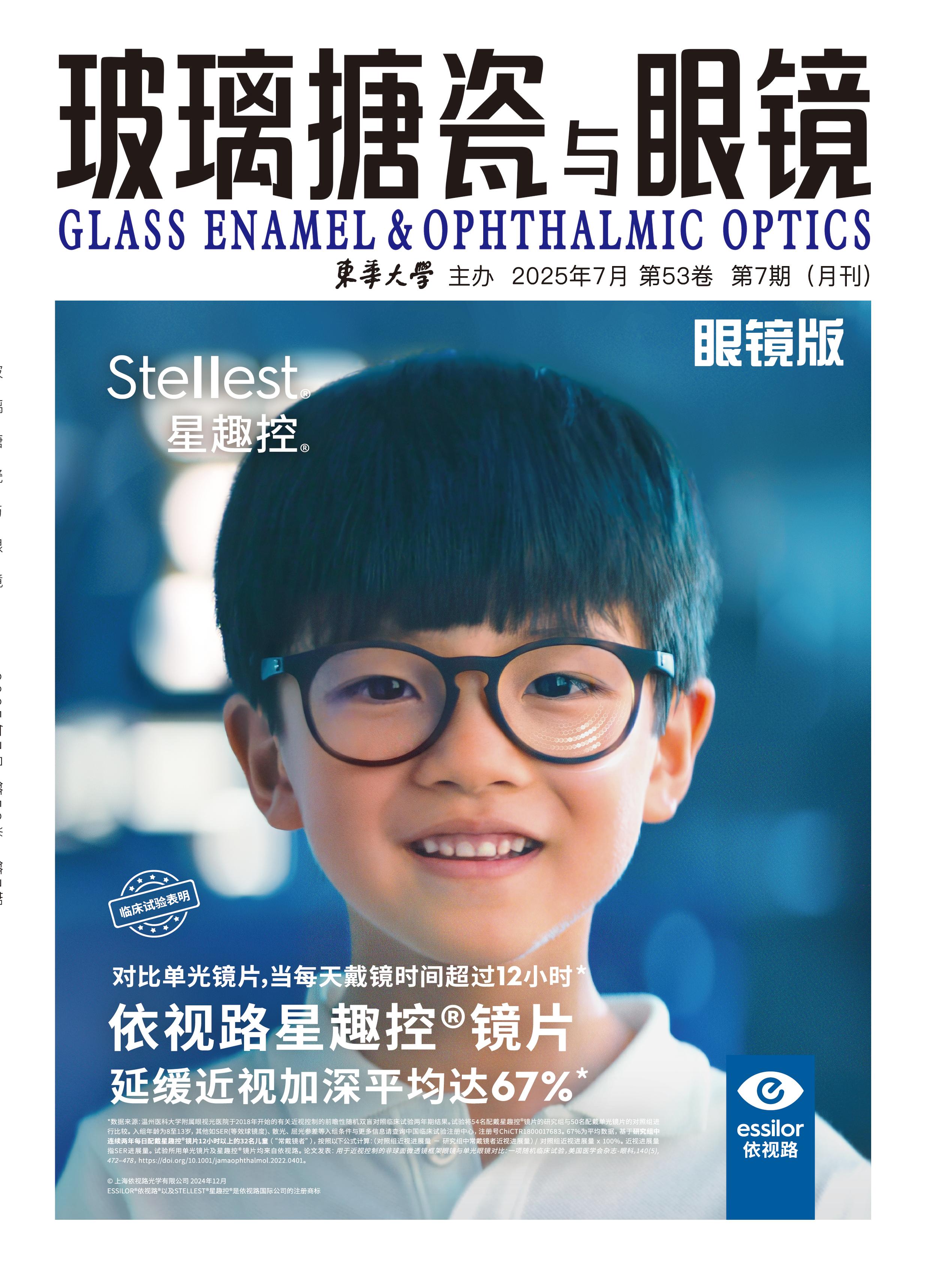
The bubble structure of glass lenses had been studied by middle infrared (MIR) spectroscopy. The infrared absorption modes of bubble structure of glass lenses mainly include νasO=C=O-one dimension. The thermal stability of bubble structure of glass lenses was further studied by temperature varying MIR spectroscopy. It was found that the main functional groups (νH-O-H-one dimension、νasO=C=O-one dimension and δO=C=O-one dimension) absorption frequency and intensity of the bubble structure of glass lenses had changes in the temperature range of 303~393 K. The main functional groups (νH-O-H-two dimension, νasO=C=O-two dimension, δH-O-H-two dimension, νsO=C=O-two dimension and δO=C=O-two dimension) information about the sensitivity to heat and the change speed of bubble structure of glass lenses were further studied by two-dimensional MIR spectroscopy. It is found that the infrared absorption modes of glass lens bubble structure are mainly concentrated in 3 420~3 380 cm-1, 2 365~2 335 cm-1, 1 660~1 630 cm-1, 1 350~1 330 cm-1 and 680~660 cm-1,about 5 frequency ranges, which show different spectral performance. This paper had expanded the research scope of three-stage MIR spectrum (including MIR spectrum, variable temperature MIR spectrum and two-dimensional MIR spectrum) in the bubble structure and thermal denaturation of important optical products (glass lenses).
According to the method described in ISO 14889 “Ophthalmic optics-Spectacle lenses-Fundamental requirements for uncut finished lenses”, the speed of loading mass was changed to test different resin spectacle lenses. The experimental results show that the change of the maximum loading speed of the lens is related to the processing technology. The mechanical strength of the lens static pressure method is determined by the conditions of the monomer in the blank forming stage and the cutting conditions set during the surface optical processing.
Peripheral defocus glasses are widely used in myopia prevention and control, and the effect of myopia control is closely related to the accuracy of glasses assembly parameters. Based on the design characteristics of peripheral defocusing glasses, the corresponding testing standard and requirements are suggested. At the same time, through the analysis of three kind of common peripheral defocus glasses optical center and geometry center disaccord, put forward the concrete instruction suggestion for the clinical peripheral defocus glasses assembly and the quality inspection.
To investigate the efficacy and safety of photobiomodulation with 650 nm wavelength in controlling ocular axial length (AL) changes in myopic anisometrometria, this study involved 42 patients with anisometropia not less than 1.00 D treated with the same laser irradiance(Eleven of them had anisometropia of not less than 1.50 D). All subjects were dosed daily and followed up at 1st, 3rd, 6th, 9th and 12th every month. We find that anisometropia can be benefit from photobiomodulation with unbalanced efficacy between the same patient and the same light dosing.
Nickel is an allergenic metal element, and nickel alloys or nickel compounds are included in the list of carcinogens. With the release and implementation of “Technical requirements and measurement methods for nickel precipitation in spectacle frames”, the limit value requirements for nickel release have now been added to the standards for spectacle frames and sunglasses. In order to understand whether there is a risk of nickel release in internet sales spectacle products, this research on nickel release of spectacle frames in internet sales was carried out. The results showed that the rate of failure of nickel release in the internet sales spectacle products was as high as 41.67%. The main reasons for the failure were the presence of nickel in the frame material, the unstable production process of the plating layer and the fact that the accessories came from different manufacturers. In order to promote the continuous improvement of the quality of online sales of glasses products, relevant suggestions are put forward for consumers and the supervision of spectacle products.
Under the background of prevention and control of myopia, in order to solve the disadvantages existing in the talent cultivation mode of optometry technology major, some new methods were researched, such as science popularization education regarding eye health, student society, production-education integrated training base and information technology. They can enhance students’ enthusiasm and initiative in learning, enhance their confidence and belief to become an excellent optometry professional, improve their post competency, and help their personalized growth.
Teaching materials are an important carrier for personnel training. At present, the problem of insufficient adaptability of teaching materials for optometry major in higher vocational colleges is becoming more prominent. Based on this, the professional group of optometry technology takes the “Post Course Competition Certificate and Innovation” education mode as the path, aims to help the “Three-wide Education” and radiate the public love-eye science education, to create a teaching material system in the field of “Education, Training and Popularization”, which is guided by standards and supported by resources, and serves the training of talents and the visual health of the whole people.










